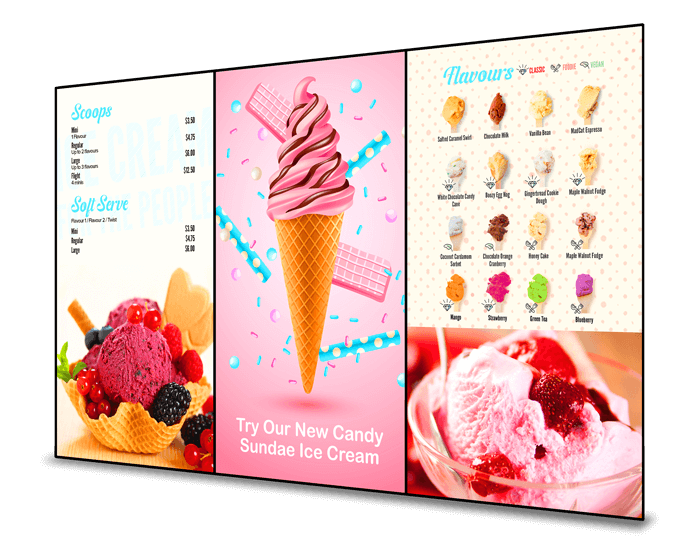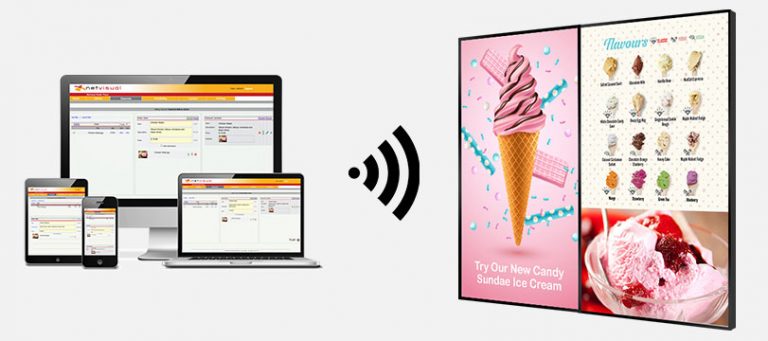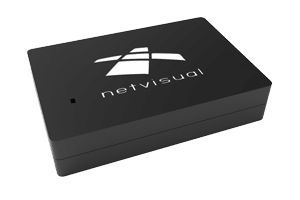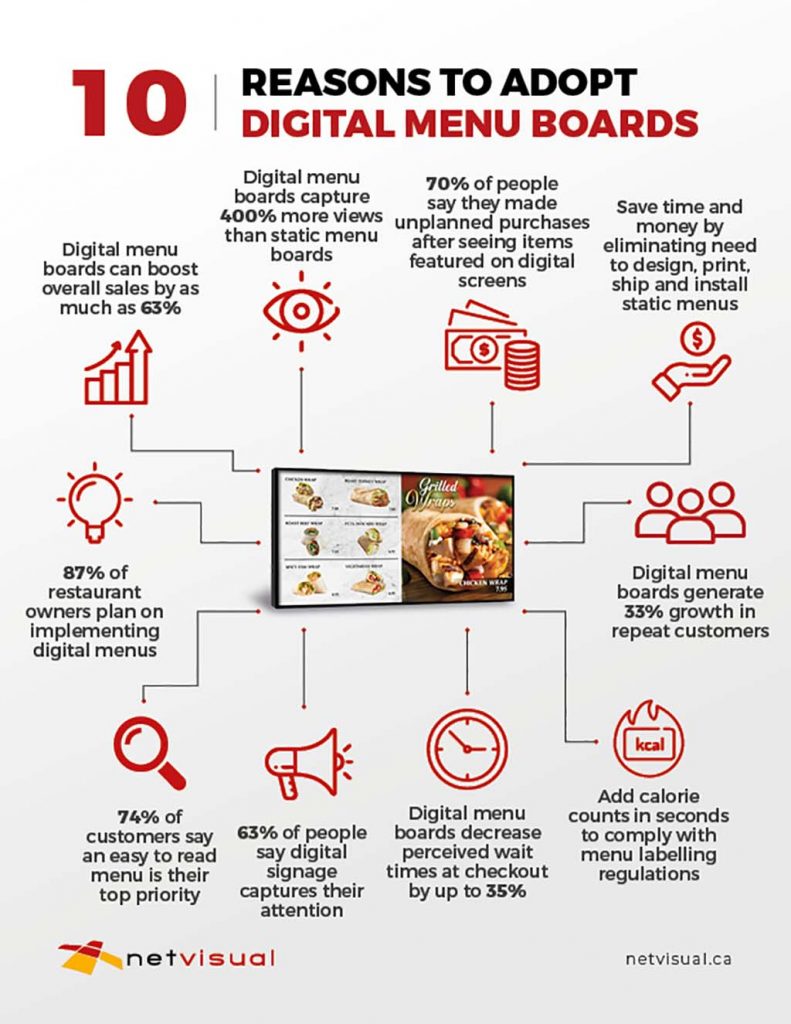Screens are used everywhere nowadays. You can easily spot it in restaurants, public spaces, shopping centers, or even office buildings. Digital signage displays can show you information that helps increase your experience or simply it can be used as a decoration. They could be static digital signs, they could be dynamic screens, or there could be a big video wall. Or there could be a combination of all of these.
Simply put, digital signage is a screen of some sort (probably an LED or LCD screen), some kind of visual messaging presented in a digital format, and a way for the screen to show the messages.
The history
In its most basic form, if someone chooses to put a few PowerPoint slides on a USB and play them in rotation on a TV, that can be considered as digital signage. But the digital signage industry realizes that there’s a lot of downside from having Powerpoint slides as your Digital Signage. For instance, the update process can be long and you have to do it manually, not to mention it limited your opportunity to grow and expand your business. Therefore, we have come up with a cloud-based software system, which allows you to easily access and make changes to your Digital Display via any Web Portal.
So, How do digital signage systems work?
Here are the basic things you need to understand:
Digital Displays
The first and most obvious component is the display. Although digital displays for digital signage look very similar to standard consumer TVs, they are more robust and designed to be on 24/7. You should invest in commercial-grade screens that would last for many years to come. Digital displays also come in other formats such as digital menu boards, video walls, stand-alone displays/digital kiosks, transparent LED displays, shelf screens, and many more.

Content Management Software (CMS)
A digital signage Content Management System is a platform for managing and updating your digital signage content. Using a web-based digital signage solution, you can update your content from anywhere, anytime as long as you connect to the internet.

Digital Signage Player (Media Player)
A digital signage player (also known as a media player) is a small device that connects to a digital display and renders content to it. This handy device will be connected to the TV and act as the gateway between your screen and the Content Management System.


Content
Digital signage is only as effective as the content it shows. Content has the power to enhance the customer experience and inspires action. Beautiful design content helps you effectively deliver your message to your mass audiences.
Support Hardware
Support hardware is all of the mounting hardware, cabling, network connections, etc. that connect your digital signage system together. It’s also used to ensure your digital solution are installed in the most visually appealed ways and easily accessible for maintenance and upgrade.
Why is it important for you to have Digital Signage?
Find out the 10 reasons why you should adopt digital menu boards for your restaurants in the infographic below:

Based on Digital Signage Today A lot of Digital Signage provider only provide the first 3 items on the list (Digital Display, CMS, Media Player), even though you can easily find a designer and a technician online. But in busy time, it could be a hassle to put all of it together. That is why Netvisual as a leading full-service provider of digital signage solutions for a multitude of industries across Canada and the USA. We provide top quality commercial-grade screens, easy-to-use digital signage software, seamless installations across Canada and the USA, custom content creation and dedicated technical support. We specialize in a wide range of innovative digital displays including digital menu boards, stand alone displays, transparent LED displays, video walls, shelf screens and digital building directories.
Ready to start your digital signage project? Contact us today!

